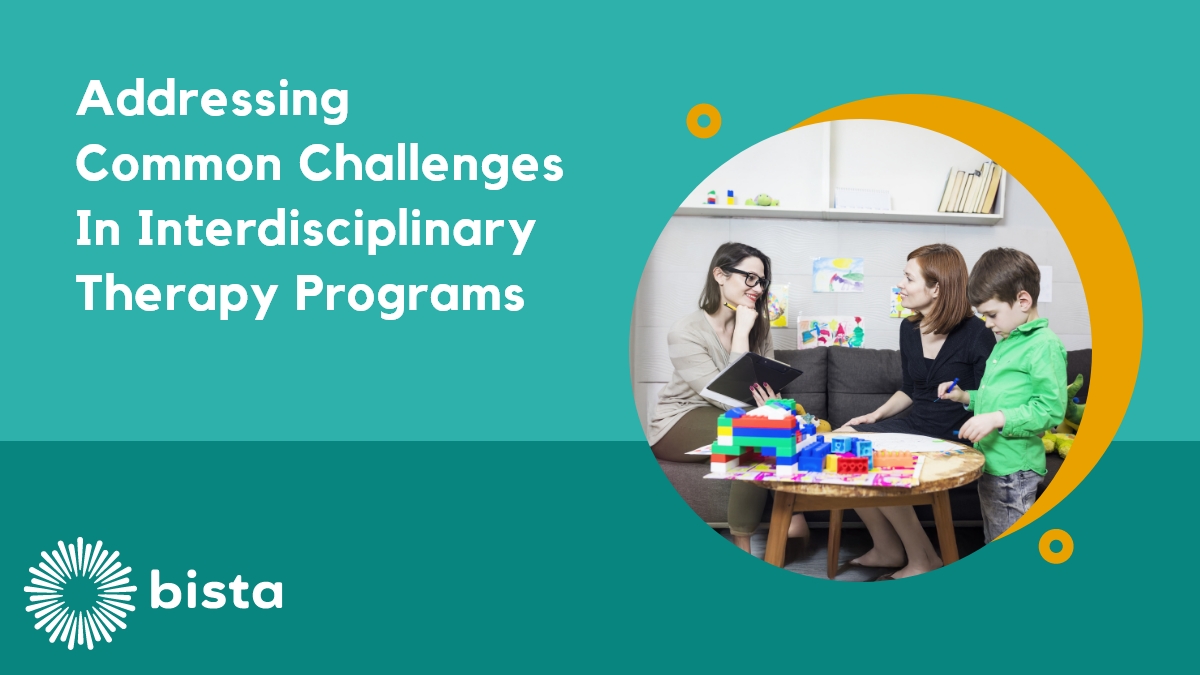Interdisciplinary therapy programs, which integrate multiple therapeutic approaches such as Applied Behavior Analysis (ABA), speech therapy, and occupational therapy, offer comprehensive support to children with developmental and behavioral needs. However, as powerful as these programs are, they come with unique challenges that require thoughtful strategies to overcome. Addressing these challenges effectively ensures children receive the maximum benefit from an interdisciplinary approach.
Challenge 1: Coordinating Communication Among Therapists*
When multiple therapists are involved in a child’s care, communication breakdowns can occur. Each therapist may have unique goals, methodologies, and perspectives, which can sometimes lead to confusion or conflicting strategies.
Solution: Establishing regular team meetings is essential. These meetings allow therapists to share progress, align treatment goals, and discuss potential adjustments to therapy plans. Using shared digital tools, like collaborative treatment notes, ensures that all team members stay updated on the child’s progress.
Challenge 2: Aligning Goals Across Disciplines
Each therapy discipline focuses on specific aspects of a child’s development. For instance, an ABA therapist may prioritize behavioral interventions, while a speech therapist focuses on language development. Without alignment, goals may seem disjointed to families.
Solution: Creating a unified treatment plan that incorporates input from all therapists ensures consistency. By prioritizing overarching goals, such as improving a child’s social interactions or self-care skills, therapists can work collaboratively while maintaining their discipline-specific strategies.
Challenge 3: Balancing the Family’s Role in Therapy
Families often face the challenge of understanding and participating in interdisciplinary therapy. Navigating multiple approaches and implementing strategies at home can be overwhelming.
Solution: Providing clear, coordinated guidance to families is vital. Therapists should collaborate to present a cohesive plan to parents, breaking down actionable steps they can take at home. Parent education sessions or workshops can also help families feel confident and supported.
Challenge 4: Managing Overlap Between Therapies
Certain therapy techniques may overlap, such as strategies to encourage communication skills. This overlap can lead to redundancy or confusion for the child.
Solution: Coordination is key. By identifying overlaps early, therapists can decide which discipline will lead specific interventions while others provide complementary support. For example, while a speech therapist works on verbal communication, an occupational therapist might focus on fine motor skills for writing.
Challenge 5: Measuring Progress Across Disciplines
Progress tracking can become complicated when multiple disciplines are involved. Each therapy may have its metrics for success, which can make it challenging to present a holistic view of the child’s development.
Solution: Implementing shared progress-monitoring tools that all therapists can access simplifies tracking. A unified system enables the team to analyze how improvements in one area, such as speech, might influence behavior or motor skills. Regular reviews of these metrics provide clarity on the child’s overall progress.
Challenge 6: Ensuring Consistency Across Environments
Children may receive therapy in different settings, such as clinics, schools, or at home. Maintaining consistency across these environments can be difficult.
Solution: Therapists should collaborate with other professionals, such as teachers or in-home caregivers, to ensure consistency. Providing shared strategies and tools that can be used in various settings helps reinforce the child’s learning and skill development.
Final Thoughts
Interdisciplinary therapy programs hold immense potential to transform the lives of children with developmental needs. By addressing common challenges head-on with a collaborative, family-centered approach, these programs can deliver meaningful, long-lasting results. At BISTA Center, our dedicated team of therapists works closely with families to ensure that every child receives the individualized, integrated care they need to thrive.
For more information about how our interdisciplinary therapy programs can support your child, contact us today



